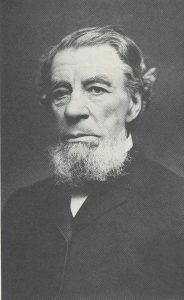

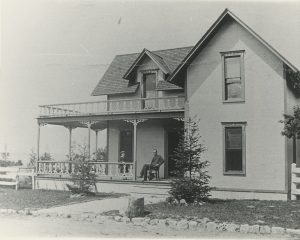

Gurdon Saltonstall Hubbard first came to Mackinac Island in 1818 as a clerk for the American Fur Company. In the same year, his work took him to Chicago where he eventually settled and became one of the city’s most influential citizens. Hubbard’s business interests included opening the first meat packing plant in Chicago as well as being an insurance underwriter, land speculator and steamship company owner. He helped organize the Chicago Board of Trade, served as representative in the Illinois General Assembly in 1832-33 and was director of the Chicago Branch of the State Bank of Illinois. In 1855, Hubbard purchased eighty acres on the southern bluff of Mackinac Island and built a cottage called “The Lilacs” around 1870.
On Sunday October 8, 1871, Hubbard and his wife Mary Ann attended morning services at the Reformed Episcopal Church in Chicago. Afterward, they had dinner with Hubbard’s cousins, Mr. and Mrs. Alfred Hebard of Iowa, at the new Palmer House hotel. They returned home after attending evening services at Grace Methodist church and prepared for bed. As Mary Ann finished combing her hair, she looked out a window and noticed a large fire burning toward the southwest. The previous evening there had been a large fire in a wood planing mill on the city’s west side and she thought perhaps it had rekindled. She watched for several minutes and finally awoke Gurdon who quickly became concerned.
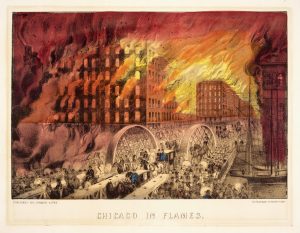

Gurdon dressed and prepared to take his family west of the city to his son’s home. Upon inspecting the route, Hubbard realized the fire was moving northeast and had jumped the river. When he returned to his home on LaSalle Street, he found the Hebards, who had left the Palmer House shortly before it was consumed. Several other family members, friends and neighbors were also there, hoping that the Hubbard’s brick house would protect them from the fire. Hubbard instructed several of the men to tear up the carpets, wet them in the cistern and spread them on the roof. Mary Ann and the maids provided food and beverage while the fire continued to move across the city.
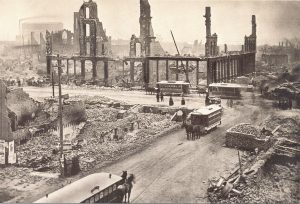

By Monday morning, the fire was only a few blocks away and nothing that Gurdon Hubbard could do would save his home. He and Mary Ann packed as much as they could and joined thousands of other Chicagoans as they fled the flames. Gurdon lost his fortune in the fire and was near bankruptcy due to investments in several of the insurance companies for which he was underwriter. Hubbard made the decision to pay off all the insurance losses for which he was directly responsible. Hubbard continued ownership of his cottage and property on Mackinac Island and it was suggested by a business associate that he sell some of the land to recoup some of his losses.
In 1882, Hubbard borrowed money from wealthy Chicago friends and had his land on Mackinac Island surveyed and platted. The island had become the second national park in 1875 and property was in demand for constructing summer cottages. Hubbard’s idea was to build a fashionable resort hotel and cottage community. The land was platted for 132 building lots which he named “Hubbard’s Annex to the Mackinac National Park.” Hubbard promoted the lots throughout the Midwest and although the hotel was not built, he successfully developed a cottage community on the island that still thrives today. The sale of the lots helped Hubbard rebuild his fortune, most of which went to his family, as he passed away in 1884.
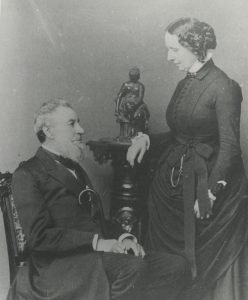

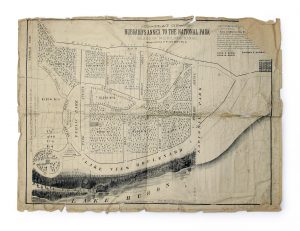

On your next visit to Mackinac Island take a ride out on Annex Road and discover Hubbard’s Annex. The best source for Mackinac Island history, including the historic cottages and neighborhoods on Mackinac Island, is Fort Mackinac. The fort is open through October 24. Information on tickets can be found at mackinacparks.com.








